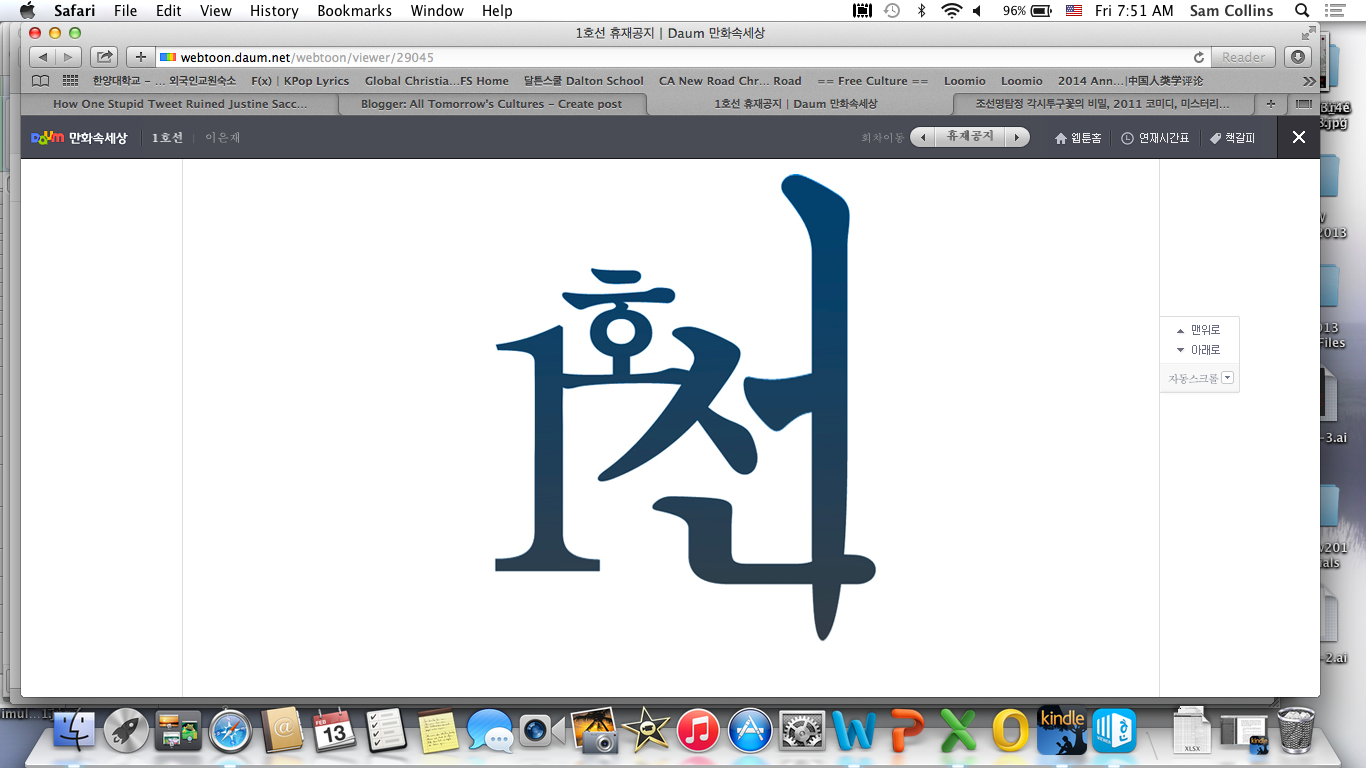A nation like Korea that has been artificially partitioned (분단) necessarily spends considerable resources planning for unification. Indeed, the governments of both north and south Korea have historically drawn legitimation from their promise of eventual unification. But the scholarship here falls mostly along economic, security and administrative policy lines: the logistics of the unified nation. What's missing from much of this is a sense of the everyday life of a unified Korea, i.e., one that, whatever the course of unification (sudden v. gradual) or the ultimate shape its will take (e.g., one nation, two systems), addresses the way people will live and interact with each other. How do people imagine interacting with the Other on a quotidian level? Indeed, the imagination of everyday life may be the most important factor in the successful unification of the two Koreas.
There are some interesting sites from which one might extrapolate. One is the growing population of North Koreans residing in the South (탈북자, or the more official, '새터민'). As they interact with their southern counterparts, seek employment (a big problem for this small group of people) and render their opinions of life in the South (helped by a fairly relentless crowd of network television and Korean social scientists), we can begin to see at least one shape for a unified Korea.
But, science fiction may give another. There have been a handful of sf novels and stories extrapolating on Korean unification through the eyes of the south, although I expect to see more as the imagination of unfification moves from an emphasis on redressing past injustices (i.e., correcting the distortions of Korea's artificial partitioning and restoring the nation/ethnos (민족) to its rightful patrimony) to the plotting the ascendancy of a Korean future (Korean unification merged into the developmental discourse of the neoliberal state).
Probably the best known of unification sf is Bok Geo-il's (복거일) 1992 novel, 파란 달 아래 (Under a Blue Moon). Originally published serially on a discussion board, Bok's novel traces the unficiation of two lunar bases in the year 2039--the north's Kim Il-sung base, and the south's Jang Yeong-sil base. There is considerable resistance from their respective Earth-bound governments, but, in the context of a strong, lunar independence movement (the Selenites, after H.G. Wells), the possibility for a truly unified ethnos (한민족) gradually becomes possible,
Indeed, we can see Bok's vision as an extrapolation of 1980's minjung (민중) discourse that sought to transcend political and social divisions through transcendental evocations of "folk" Korea, i.e., a critical, oppositional discourse on Korean identity arising "from below" and drawing selectively from agrarian tradition (Bok would return to minjung themes in some of his more recent writings). In this novel, the message is simple: without the interference of government (both domestic and international), Korean unification is a natural tendency. Through Bok's North Korean protagonist, we get both a critique of government brinkmanship, but also a circumspect critique of Western imperialism.
Here, as Grinker points out in
Korea and Its Futures, Bok anticipates more official sentiments in exonerating the North's people of any wrongdoing: the tragedy of division lies with the government that has prospered on the back on bundan (분단). The lunar bases literally allow the realization of a minjung utopia from the ground up.












